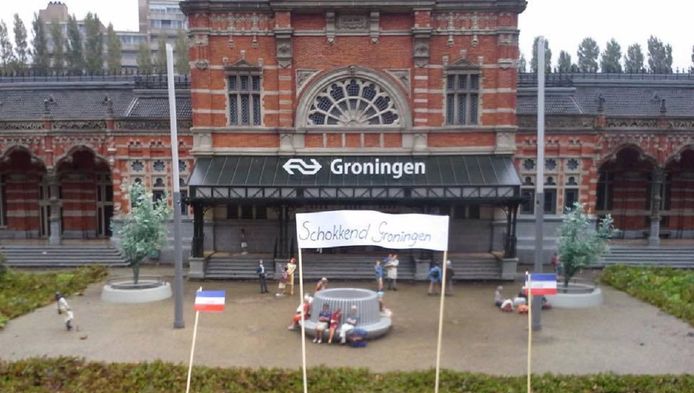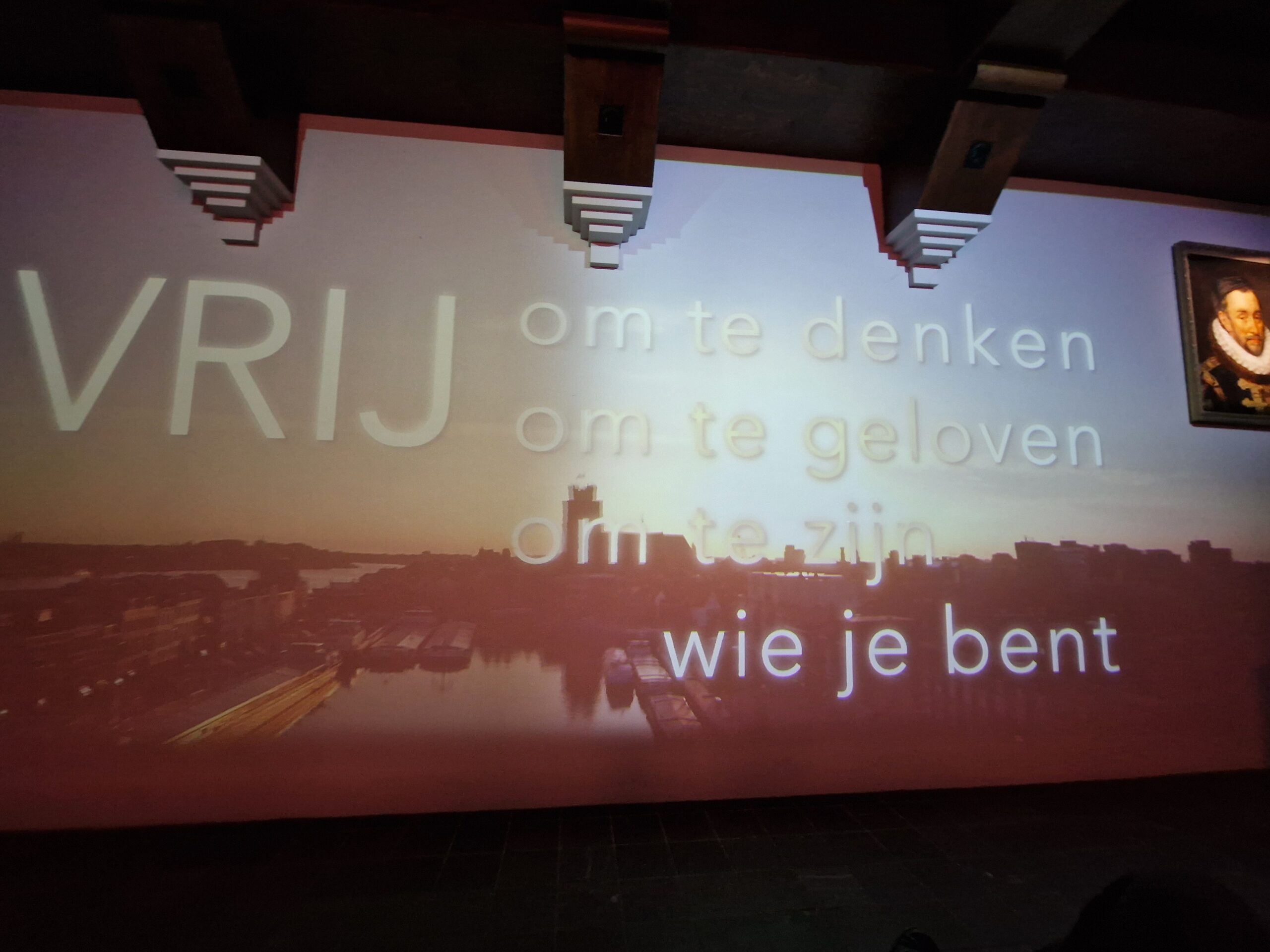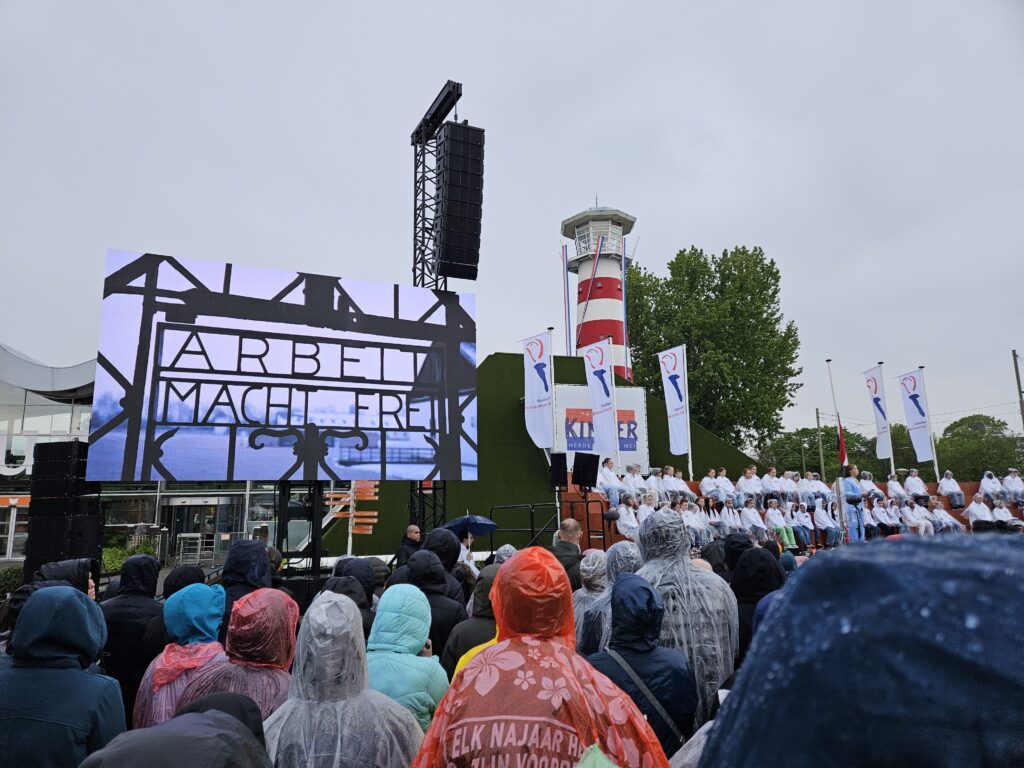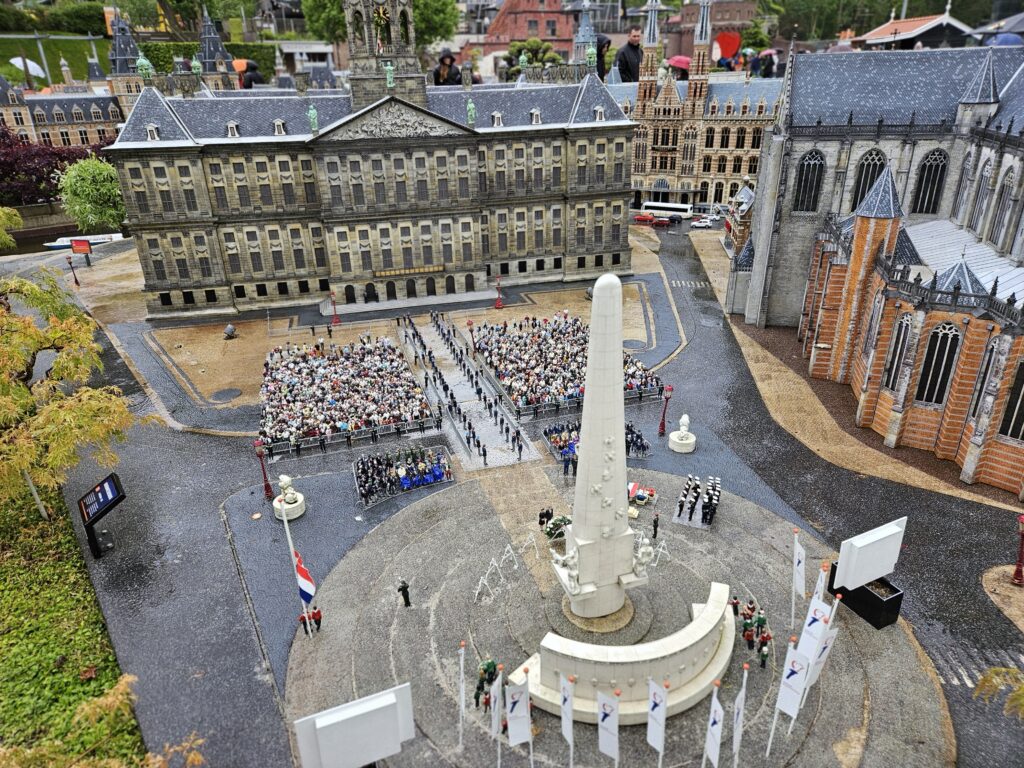Most people know the miniature park Madurodam as a place to see small houses, whether on a school trip, as a child with parents or grandparents. Many Dutch people have visited Madurodam at some point. What fewer people know is that Madurodam is not just a miniature park but also a war memorial and a place aimed at teaching people ‘what makes the Netherlands great.’ In this blog post, we want to explain that Madurodam is not only a place of entertainment but also a site where identity work is done, where different media forms are used to shape emotions and meaning, and where interesting research can be conducted.
‘Perhaps the happiest war memorial in the world.’
Madurodam was founded in 1952 in memory of George Maduro (1916-1945) who fought and died in the Second World War. Inspired by the earlier Bekonscot model village in England, the Madurodam miniature park was meant to be a fitting tribute to Maduro's sacrifice. To this day, Madurodam organizes a ‘children’s memorial service’ where children are encouraged to remember the war and apply the lessons learned from World War II to the present. Hence, Madurodam's slogan: ‘perhaps the happiest war memorial in the world.’
‘Everything that makes a small country great’
Madurodam is about the Netherlands, providing an overview of the highlights of Dutch architecture, heritage, and history. Miniatures of iconic buildings like Schiphol Airport, the Royal Palace on Dam Square in Amsterdam, Groningen Central Station, and the Zeeland Bridge form a collage of Dutch highlights. Together, they provide an image, as Madurodam’s slogan suggests, of ‘Everything a small country is great in.’ Madurodam aims to evoke pride and reflection on the national community.
This focus is also evident in the newer attractions at Madurodam. Several multimedia attractions emphasize heritage and identity. For instance, you can fly through Dutch history in a KLM airplane, experience paintings by Dutch Masters, and virtually travel to New Amsterdam just before it became New York. The emphasis in all these attractions is on ‘feel-good history,’ meaning there is consistently an optimistic, proud narrative of Dutch history. The darker sides of the Netherlands are not highlighted (for example, the Dutch East India Company in Madurodam is primarily an illustration of Dutch commercial spirit, without critical commentary). In Hof van Nederland’ attraction, you can be present at the birth of the Netherlands: the first meeting of the States General in 1572.
In Hof van Nederland, various special effects and projections are used. Bullets fly through the space, a map of the Netherlands and the ebb and flow of the battle against Spain light up, and historical figures are presented via holograms. Meanwhile, a voice-over delivers a passionate speech portraying William of Orange as a hero and the Eighty Years' War against Spain as a heroic struggle for freedom. The attraction proudly claims that as a result, the Netherlands became the first country where you are free ‘to think, believe, and be who you are.’ The multimedia installation pulls out all the stops to evoke feelings of pride. You can watch a recording of this attraction below.
Big issues in miniature
In short, Madurodam is a place where, in addition to entertainment, significant identity work is done. A lot is invested in combining fun with depth. It is a place where big issues like national identity, freedom, and pride are made comprehensible and tangible. This is also reflected in the conflicts that arise around Madurodam. Although Madurodam presents an optimistic image of the Netherlands, there can be quite a bit of friction when it comes to polarizing subjects. For example, when it was announced that Madurodam would place a miniature oil platform sponsored by Shell, environmental movements protested. In debates about gas extraction and the resulting earthquakes in Groningen, miniature protest signs appeared at the miniature Groningen station in Madurodam. There has also been much debate about whether a mosque should be included in Madurodam (or why not).

All in all, Madurodam is a place where many dimensions come together. It is a place where children and adults have fun, but it is also a place where schools and parents take their children because it offers a learning experience. Visitors learn about Dutch highlights through play and experience ‘everything a small country is great in.’ This makes Madurodam an interesting place for research: it tries to evoke feelings of pride, but it is also a place where what is typically Dutch and why we should be proud of it is continually negotiated and shaped.
Madurodam has also been an inspiration for miniature parks around the world. Splendid China, Miniatürk in Istanbul, and Mini-Israel are all examples of miniature parks that, following the example of Madurodam, aim to instill pride and interest in national culture in visitors. All these parks play a role in debates about who and what belongs to the national community and what does not. This makes miniature parks interesting objects for research. An initial article on Miniatürk and Madurodam will be published soon. Stay tuned!


